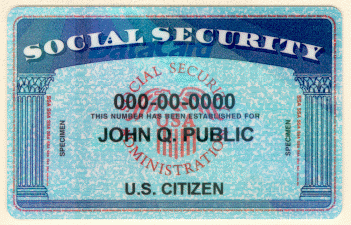Social Security Benefits: What You Give Isn’t What You Get
By
Chris Hellman
Posted:
|
Budget Process,
Social Insurance, Earned Benefits, & Safety Net
Because the Social Security program is an earned benefit programs – future beneficiaries pay into the system while they are members of the work force – it is often assumed that your benefits are based on your contributions to the program. In this model, Social Security would effectively operate like a type of government run savings plan.
But that’s not the case. Social Security works as a pay-as-you-go system, which means that current workers’ contributions to the Social Security program are used to pay benefits to current retirees. Rather than functioning as a retirement savings account, Social Security actually shifts wealth from one generation to another.

So if your contributions don’t determine your benefits, what does? Social Security benefits are based on your earnings history. Your actual benefit levels are calculated based on you salary levels over your working lifetime, the number of years you worked, and the age at which you chose to retire.
The pay-as-you-go nature of Social Security has a profound impact on the future of the program as our nation’s demographics shift. As we live longer and as baby boomers become eligible for Social Security benefits, the ratio of working-age Americans to the number of recipients is shifting. Over the life of the Social Security program, this shift has been dramatic. According to House Budget Committee Chair Paul Ryan (R-WI), when the Social Security program was created in 1935, the ratio of working-age Americans to retirees was 42 to one. By 1950 this ratio had dropped to 16.5 to one, and it is projected that by 2040 it will be 2.1 to one.
Already the impact of this shift is being felt. A recent analysis by the Congressional Budget Office (CBO) found that over the next 10 years, Social Security payments will on average exceed dedicated tax revenues by about 10 percent. That will require the Social Security program to spend down resources in the Social Security trust fund. Left unchecked, this practice will lead to the program’s eventual insolvency. Without any changes in the current system, Social Security will be unable to pay all schedule benefits around 2033, after which it will be able to pay around 75 percent of scheduled benefits until around 2086. (For some changes that would improve the long-term solvency of the program, see our Social Security fact sheet.)
Coincidentally, earlier this week the Social Security Administration (SSA) announced that Social Security beneficiaries will receive a 1.7 percent Cost of Living Adjustment (COLA) in 2013, so that their benefits keep pace with inflation. This is one of the smallest COLAs since 1975, when the SSA adopted a system of automatic benefit increases tied to inflation. In 2012 Social Security recipients received a 3.6 percent increase in benefits after getting none the previous two years.
Want to get an idea of what your monthly Social Security benefit will be? Check out the SSA’s Retirement Estimator.